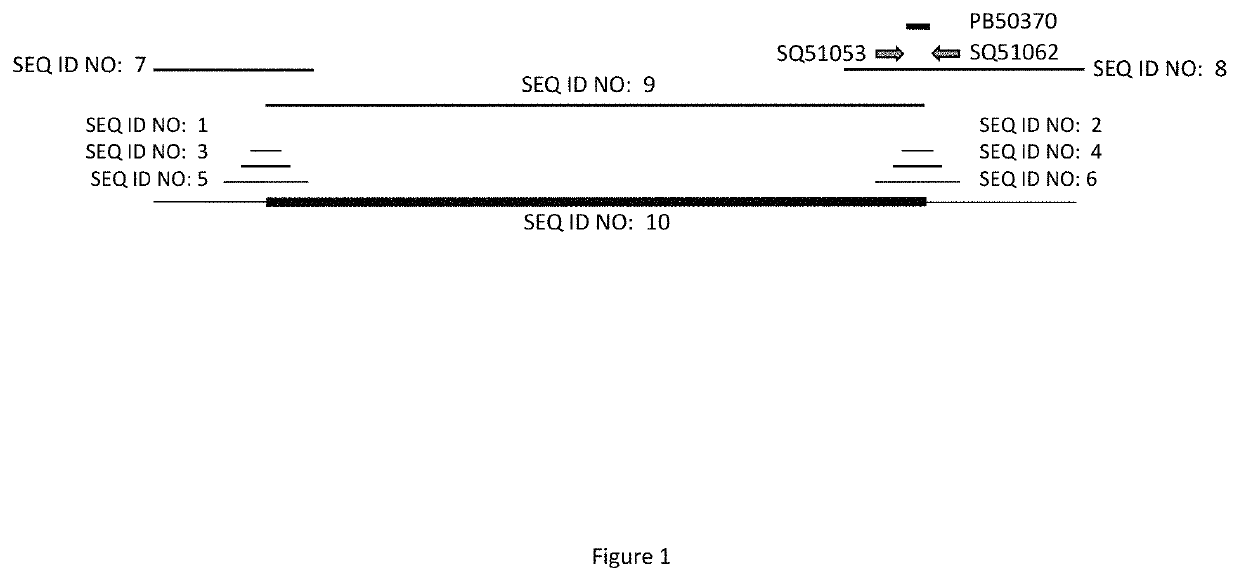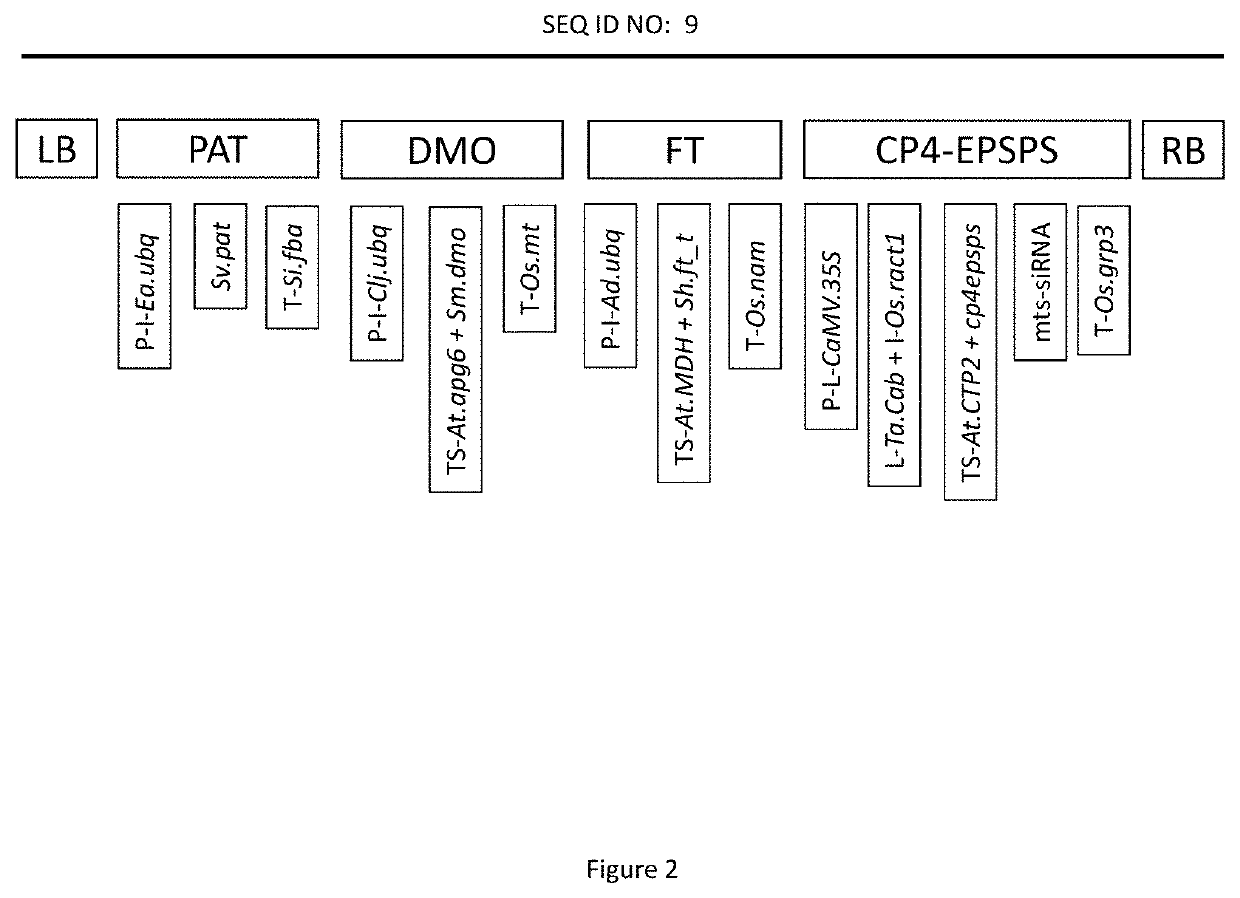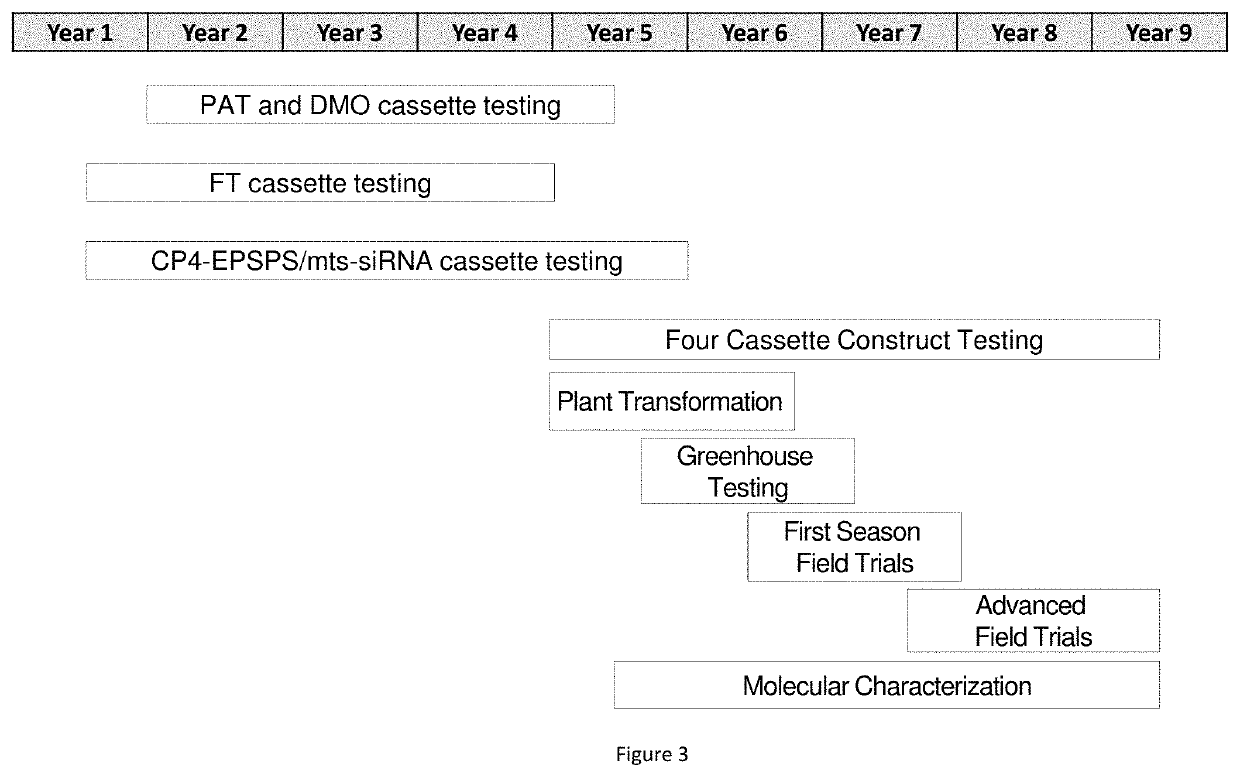Maize event MON87429 and methods of use thereof
a technology of dna molecules and maize, which is applied in the field of recombinant dna molecules of maize event mon87429, can solve the problems of time-consuming and expensive process of germplasm, and achieve the effect of improving toleran
- Summary
- Abstract
- Description
- Claims
- Application Information
AI Technical Summary
Benefits of technology
Problems solved by technology
Method used
Image
Examples
example 1
n Cassette Testing, Construct Design, and R0 Plant Testing
[0086]This example describes the design and testing in maize plants of thirty-five different constructs. Each construct contained four expression cassettes, each expression cassette used for expressing a different transgene. This testing was done to select the best construct to use for expressing all four transgenes in maize. Each construct had a unique configuration, varying by expression cassette orientation and expression elements.
[0087]Various individual expression cassettes with different expression element combinations and transgenes were designed, cloned into plant transformation vectors, and tested for trait efficacy in maize plants to create a pool of the best individual expression cassettes. Using this pool of individual expression cassettes, 35 different constructs were designed so that each contained four expression cassettes (each expression cassette having the transgene for PAT, DMO, CP4-EPSPS, or FT) and could ...
example 2
son Field Trials
[0092]Field trials were conducted over many years with events advanced from the R0 analysis for each of the 35 constructs, and the performance of every plant for each construct in their first season of field trials was then analyzed as a set. Each construct was thus represented by many unique events. This allowed a larger number of constructs to be tested in first season field trials while only advancing beyond the first season trial the top performing constructs. Separate first season field trials were conducted with R2 plants (homozygous for each event) for (1) inbred efficacy for glufosinate+dicamba, quizalofop, and 2,4-D tolerance, (2) Roundup Hybridization System (RHS) efficacy, and (3) herbicide pressure testing for tolerance to higher application rates of herbicides quizalofop, 2,4-D, glufosinate, and dicamba.
[0093]An inbred efficacy screen of plants to evaluate herbicide tolerance for glufosinate+dicamba, quizalofop, and 2,4-D was carried out. Herbicide treat...
example 3
Analysis
[0100]Molecular analysis was conducted concurrently with the field trials on events that were advanced. DNA amplification and sequencing were used to confirm the insert sequence, insert copy number, and absence of backbone in the insert. The insertion site in the maize genome for each event was mapped. Northern analysis was done to detect and measure mRNA transcripts of the pat, dmo, ft_t, and cp4-epsps genes. N-terminal protein sequencing of the PAT, DMO, FT_T, and CP4-EPSPS proteins purified from transgenic plants was done to confirm the recombinant protein sequence. Western blot analysis to detect the PAT, DMO, FT_T, and CP4-EPSPS proteins was done with transgenic plant samples. In depth Southern analysis was performed on genomic DNA from R1 plants to confirm copy number and the absence of backbone.
PUM
| Property | Measurement | Unit |
|---|---|---|
| temperature | aaaaa | aaaaa |
| temperature | aaaaa | aaaaa |
| temperature | aaaaa | aaaaa |
Abstract
Description
Claims
Application Information
 Login to view more
Login to view more - R&D Engineer
- R&D Manager
- IP Professional
- Industry Leading Data Capabilities
- Powerful AI technology
- Patent DNA Extraction
Browse by: Latest US Patents, China's latest patents, Technical Efficacy Thesaurus, Application Domain, Technology Topic.
© 2024 PatSnap. All rights reserved.Legal|Privacy policy|Modern Slavery Act Transparency Statement|Sitemap



